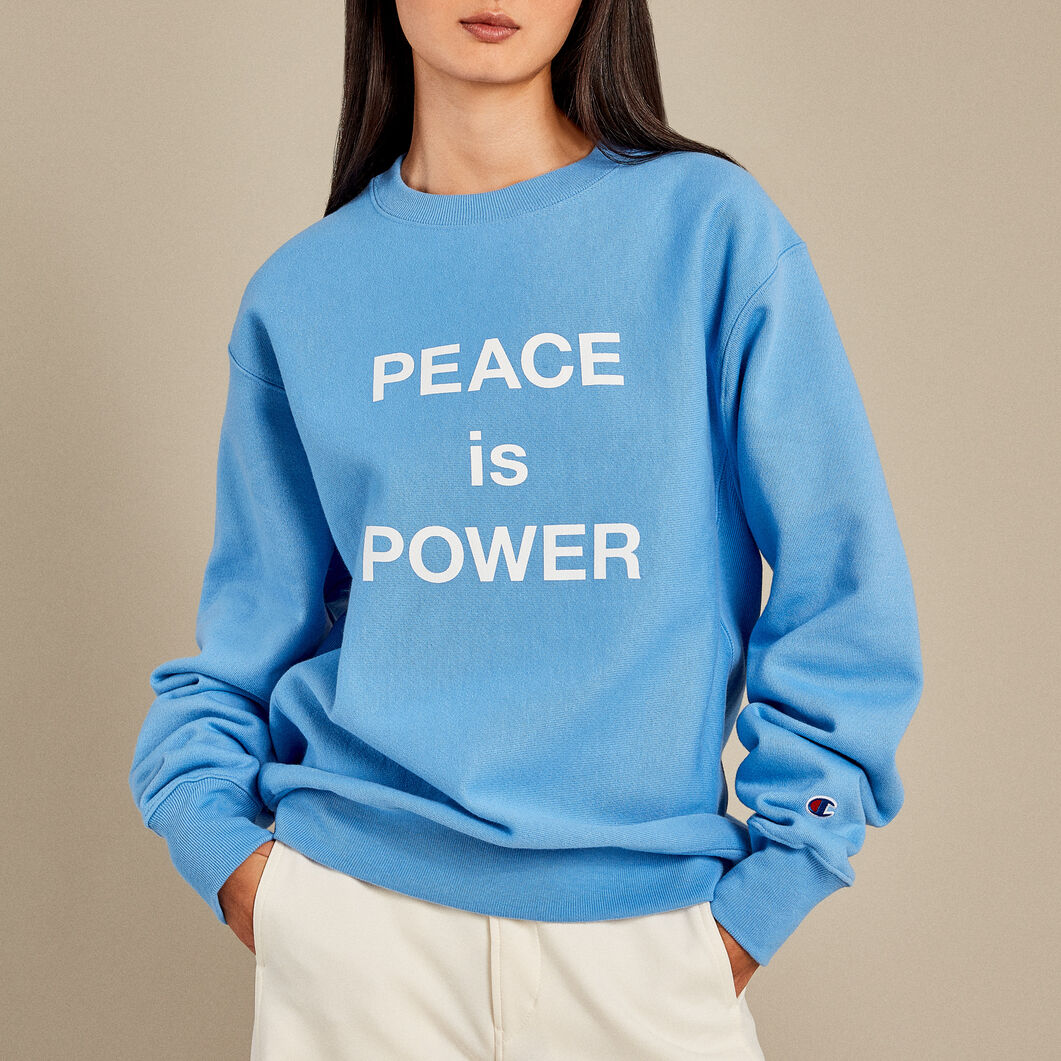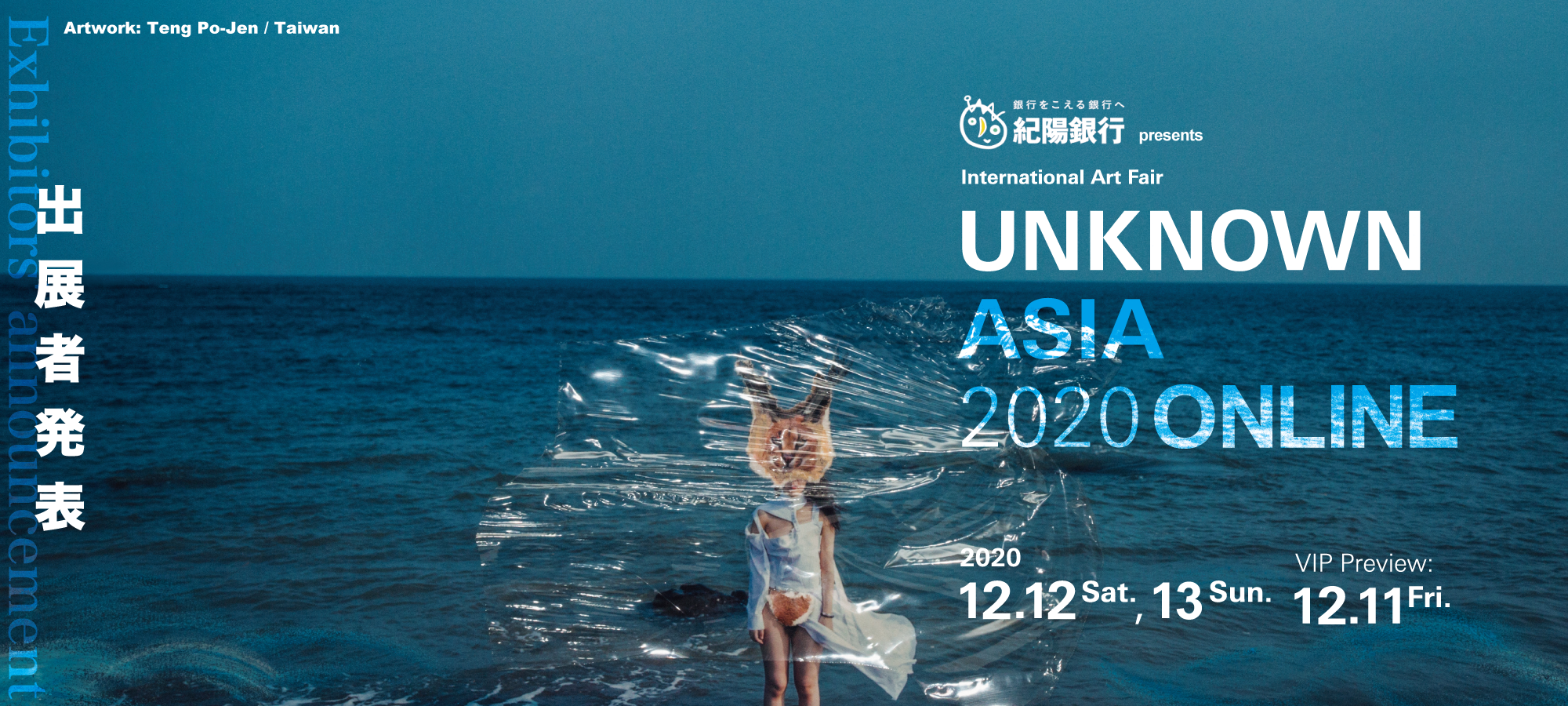ECHIGO-TSUMARI ART TRIENNIAL 2006
HAPPENINGText: Yurie Hatano
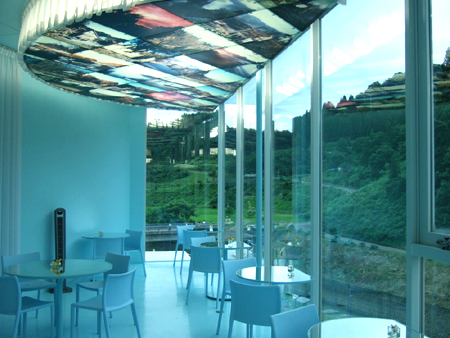
Jean-Luc Vilmouth, Cafe Reflet
Somewhat too sophisticated for this area, however, the “Cafe Reflet” by Jean-Luc Vilmouth (France) provides local cuisine with a view of “The Rice Field” from expansive windows. The Tsumari taste such as “No-no-Gozen” with seasonal vegetables, farmers’ ordinal lunch “Nora-Shigoto-Teisyoku” is made by local people. The ceiling is decorated with pictures that local residents took from their own houses, and these are reflected on the mirror tables.
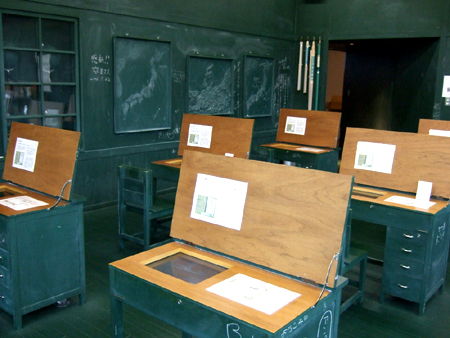
Tatsuo Kawaguchi, Relation-Blackboard Classroom, 2003
One of the 2 room works by Tatsuo Kawaguchi (Japan), “Relation-Blackboard Classroom” (2003). He has 2 themes for each room work; “Farming” and “Culture”, and this whole “Culture” room has been blackboard-colored. You can write something up anywhere, not just the formal blackboard space. The other “Farming” room has farm implements the artist gathered from local people, and the implements are sealing up seeds.
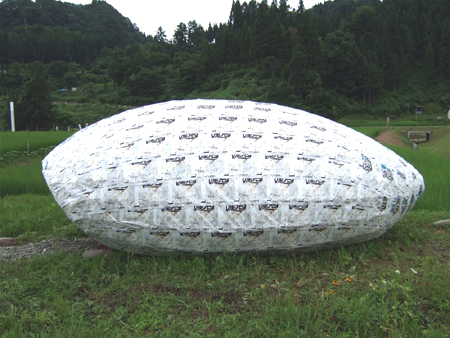
Vincent Du Bois, Rice Room, 2006
Rice might be one of the things anyone can associate the most with Echigo-Tsumari. Viewing the rice farming scenery and people, the white steamed rice you eat in Tsumari is dramatically delicious. The Art Triennial uses the rice grain as symbolic design everywhere including its pamphlet, and Vincent Du Bois (Switzerland) expresses it in “Rice Room” (2006). You can enter the rice here, which usually enters in your mouth. Inside there were rice sounds playing, which was also like sounds of falling rain, a stream, etc. Sounds from mother earth have something in common.
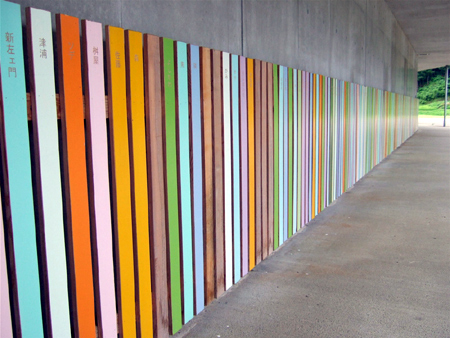
Josep Maria Martin, Museum of the constellation families of Matsudai, 2003
“Museum of the constellation families of Matsudai” (2003) by Josep Maria Martin (Spain) was lining up to the entrance of “NO BUTAI”. When walking along the artwork, voice of local people caught my ear all at once. Words of warm welcome which are full of human touch came from a speaker. Those colorful plates have 1470 trade names of which are all Matsudai households. Trade name is a traditional family name available only in the area. Every family can freely decide their own name without any registration, but it continues from generation to generation once decided.
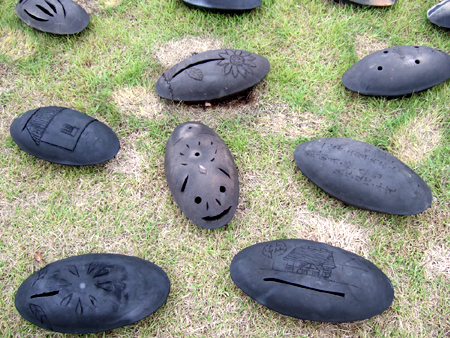
Yasuyuki Watanabe, The beat of the ground, 2006
This is from a project of Yasuyuki Watanabe (Japan), “The beat of the ground” (2006). He has created sound tools of pottery, together with local people, and these are surrounding a small furnace placed in “NO BUTAI”. Each has each own cute expression, and different beat of the ground. This artist had other exhibits of sound tools in Tokamachi area Doichi in 2003 too, and there will be music performances (player, Sachiko Nagata) in each place, Doichi and NO BUTAI, on 19th and 20th of August.
Read more ...

